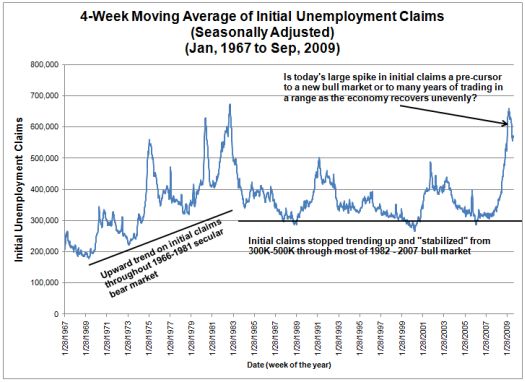Once again, I am left wondering why another poor jobs report has supposedly caught the market and pundits by surprise. Those of us on the ground, and not just generating models, know and understand the ugliness of the job situation and see how it continues to worsen, not improve. We remain on schedule to hit double-digit unemployment by the end of the year or early 2010 – something that even the Federal Reserve has long expected. Nouriel Roubini has gone as far as predicting unemployment will increase throughout 2010; and even Alan Greenspan, in his classic “newsflash” fashion, added his two cents in a recent interview making dour forecasts that align with Roubini’s. At this point, I continue to expect bad numbers and only a drop below 9% or so in the near-future would present a surprise to me.
Back in May, I suggested that the most educated in the workforce should not rest easy with its comparative advantage to the less educated. The latest unemployment numbers demonstrate that people with bachelor’s degrees or higher continue to face a worsening job market, albeit not nearly as bad as the other educational cohorts. Specifically, the unemployment rate for the most educated went from 4.7% in August to 4.9% in September as the number of employed essentially stayed the same, but no net jobs were provided to the increasing numbers of educated workers. I expect the job market to remain particularly poor for recent graduates for some time to come. Interestingly enough, the least educated of the workforce, those with less than a high school diploma, experienced a small drop in unemployment from 15.0% to 15.6%.
Finally, let’s review again where we stand historically. The graph below updates the chart I posted back in May when trying to correlate initial claims data with bottoms in the stock market. It seems that initial claims have finally peaked, but the data still tell me that we are at the beginning, not the end, of a period of protracted high unemployment. Notice how each rapid spike in initial claims led to on-going and persistent weakness in the jobs market. From 1966-1981, each spike preceded a much larger one until 1983. During the last two recessions, initial claims remained stubbornly high for two years after the peak. We still cannot tell just how much worse the jobs situation will get, but it seems safe to assume that, at best, initial claims will remain stubbornly high through 2011. It is “very likely” that we will see future spikes in initial claims as the recovery unfolds in a very uneven manner. Either behavior will easily produce double-digit employment by next year and an unemployment rate that could continue worsening throughout 2010.

Source: United States Department of Labor, Employment & Training Administration: Unemployment Insurance Weekly Claims Data
Be careful out there!
Full disclosure: no positions
